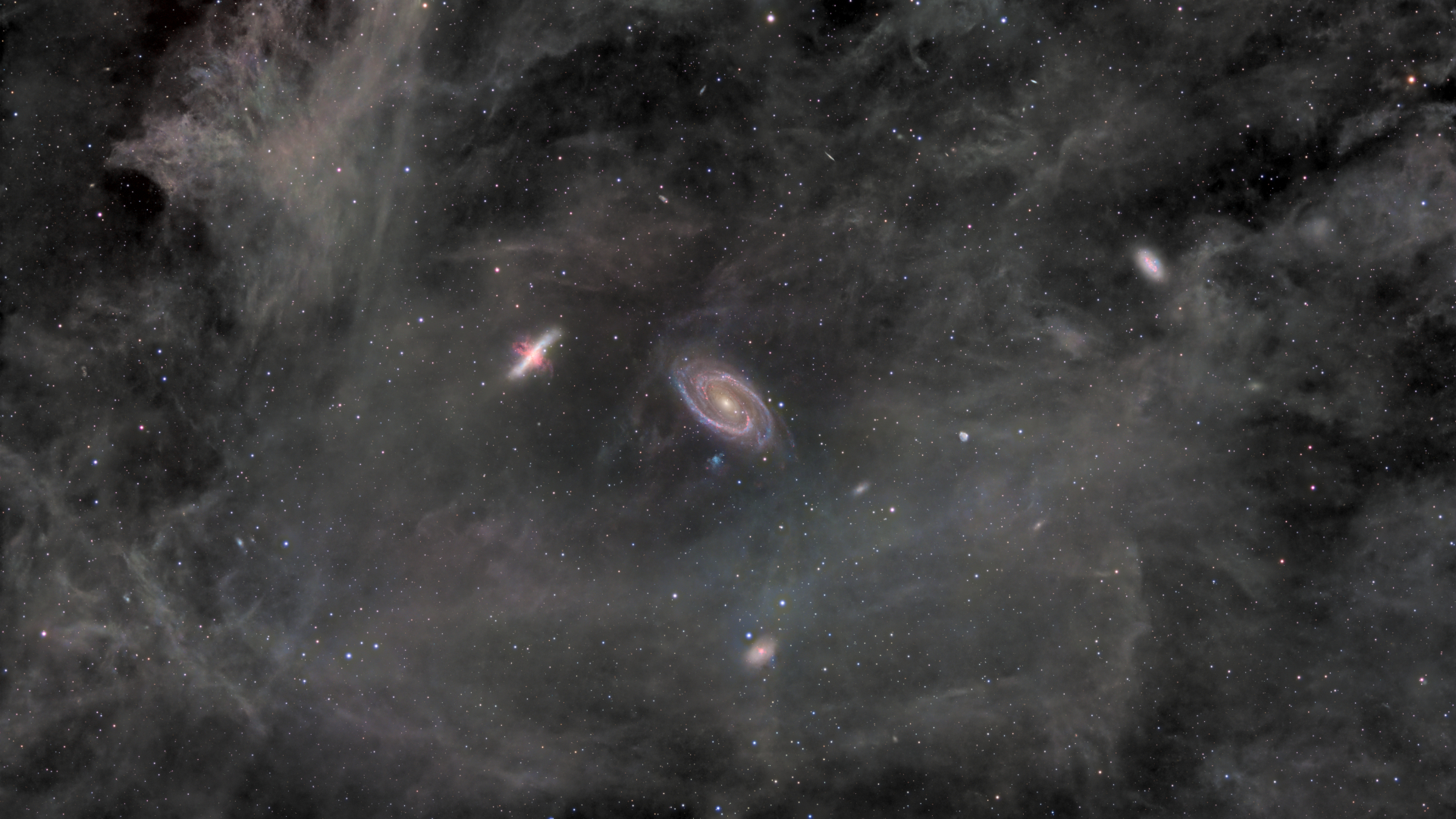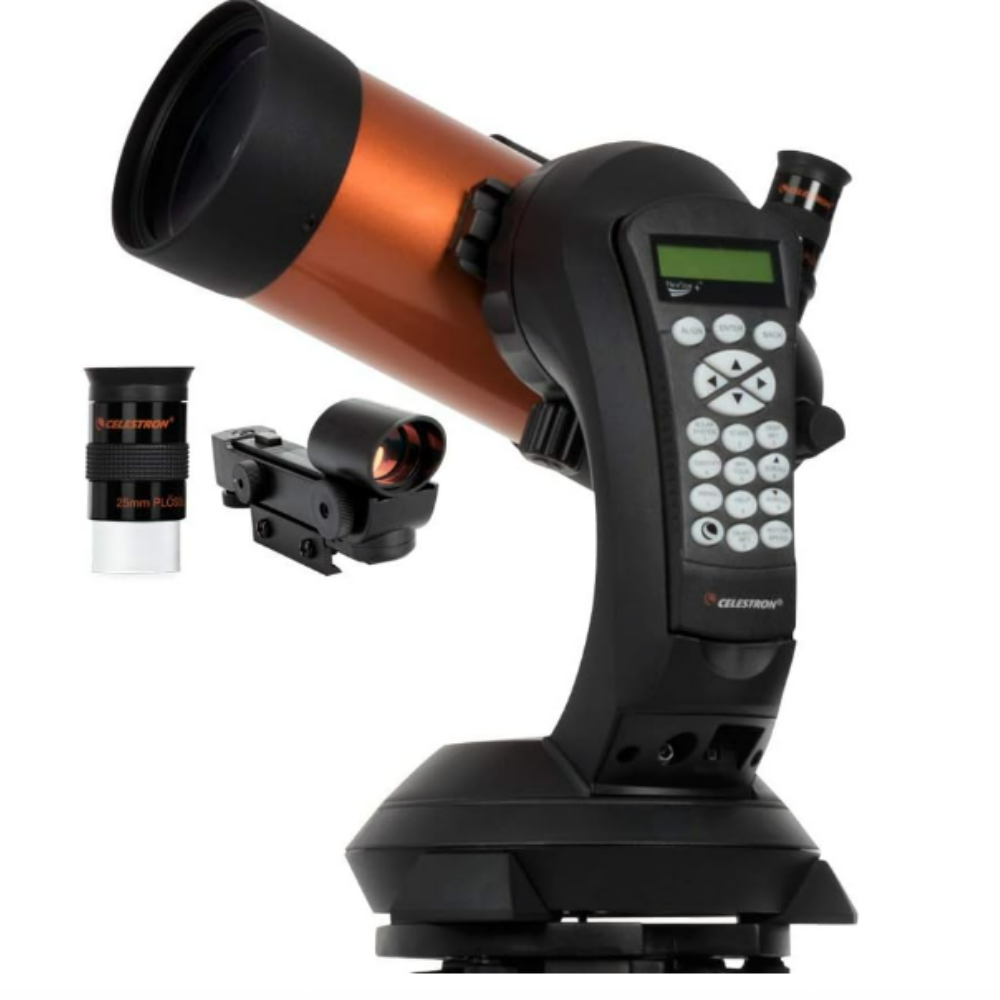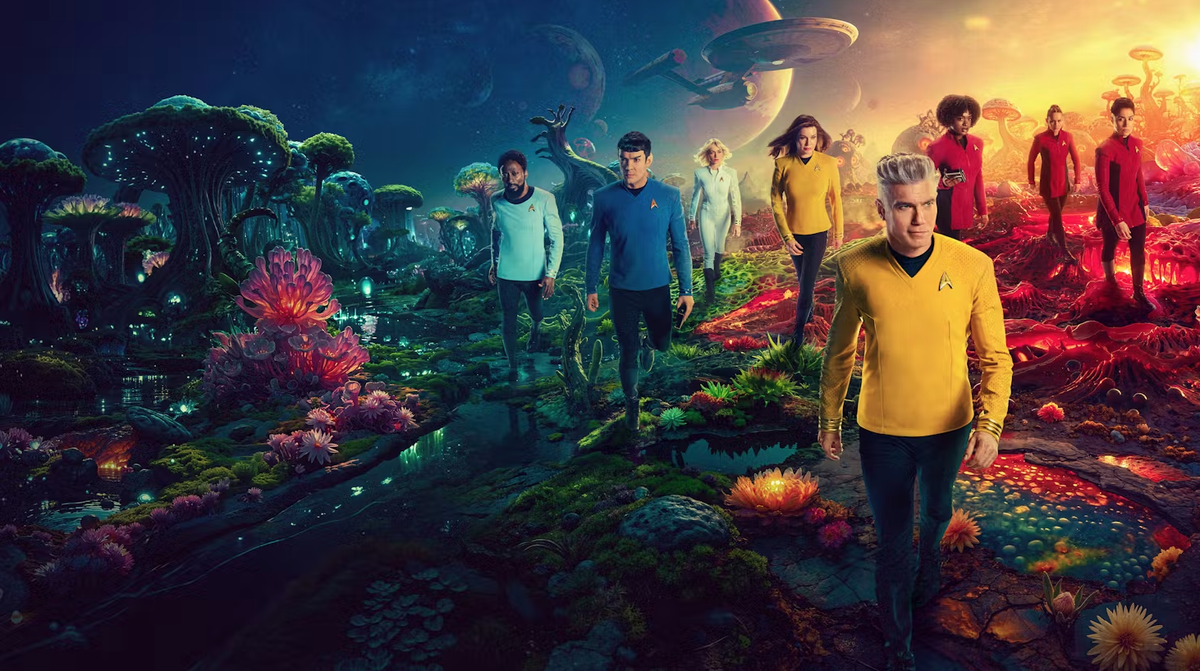
Astrophotographer Greg Meyer has captured a striking cosmic vista featuring the grand design spiral galaxy M81 alongside the nearby 'Cigar Galaxy' (M82), against the faint swirling mass of an integrated flux nebula (IFN).
The stunning image shows the classic spiral swirl of M81 — also known as Bode's Galaxy — suspended against the chaotic cloud patterns of the nebula, with the Cigar Galaxy lurking to its left. The nebula featured in Meyer's photo is much closer to Earth than the galactic duo, and is illuminated not by starlight from within, but solely by the ambient light of the Milky Way. As a result, IFNs tend to be very faint, and challenging to capture, especially when framed alongside brighter objects.
"I always admire shots with IFN. The Texas Star Party gave me the opportunity to get a lot of Lum data under dark skies to finally get my version of the classic couple," Meyer told Space.com in an email. "A bit of trick stretching the IFN data, and not blowing out the galaxies - masks!" Meyer continued, referring to a digital editing tool used to isolate and adjust specific parts of an image.
TOP TELESCOPE PICK:

Want to explore the wonders of the deep sky for yourself? The Celestron NexStar 4SE is ideal for beginners wanting quality, reliable and quick views of celestial objects. For a more in-depth look at our Celestron NexStar 4SE review.
Bode's Galaxy and M82 are found about 12 million light-years from Earth in the constellation Ursa Major. The pair are thought to have collided some 10 million years ago, with the gravitational tug of war distorting M82 into its current cigar-like shape, while prompting an explosion of starbirth, according to the European Space Agency.
The Garland Galaxy (NGC 3077) can also be spotted as a blur of light towards the bottom of the image, while a fourth galactic interloper — NGC 2976 glows to the upper right of the cosmic vista.
Meyer captured the scene over a total of 51 hours and 40 minutes using a Radian Raptor 61mm telescope paired with an ASI 2600 MM astronomy camera during the Texas Star Party astronomy event, which was held under dark sky conditions in April.
About 30 of those hours were dedicated to gathering luminance data, with the remaining time split between red, green, blue and hydrogen-alpha filter exposures. The collected light data was then processed into a single image using the astronomy software PixInsight, Photoshop and Lightroom.
Night sky enthusiasts hoping to get a glimpse of Bode's Galaxy for themselves should check out our guide to the best telescope deals, along with our roundups for the best cameras for astrophotography and best lenses for astrophotography.
Editor's Note: If you are interested in sharing your astrophotography with the readers at Space.com, please send your photo(s), comments, and your name and location to spacephotos@space.com.
.png)
 German (DE)
German (DE)  English (US)
English (US)  Spanish (ES)
Spanish (ES)  French (FR)
French (FR)  Hindi (IN)
Hindi (IN)  Italian (IT)
Italian (IT)  Russian (RU)
Russian (RU) 








Comments